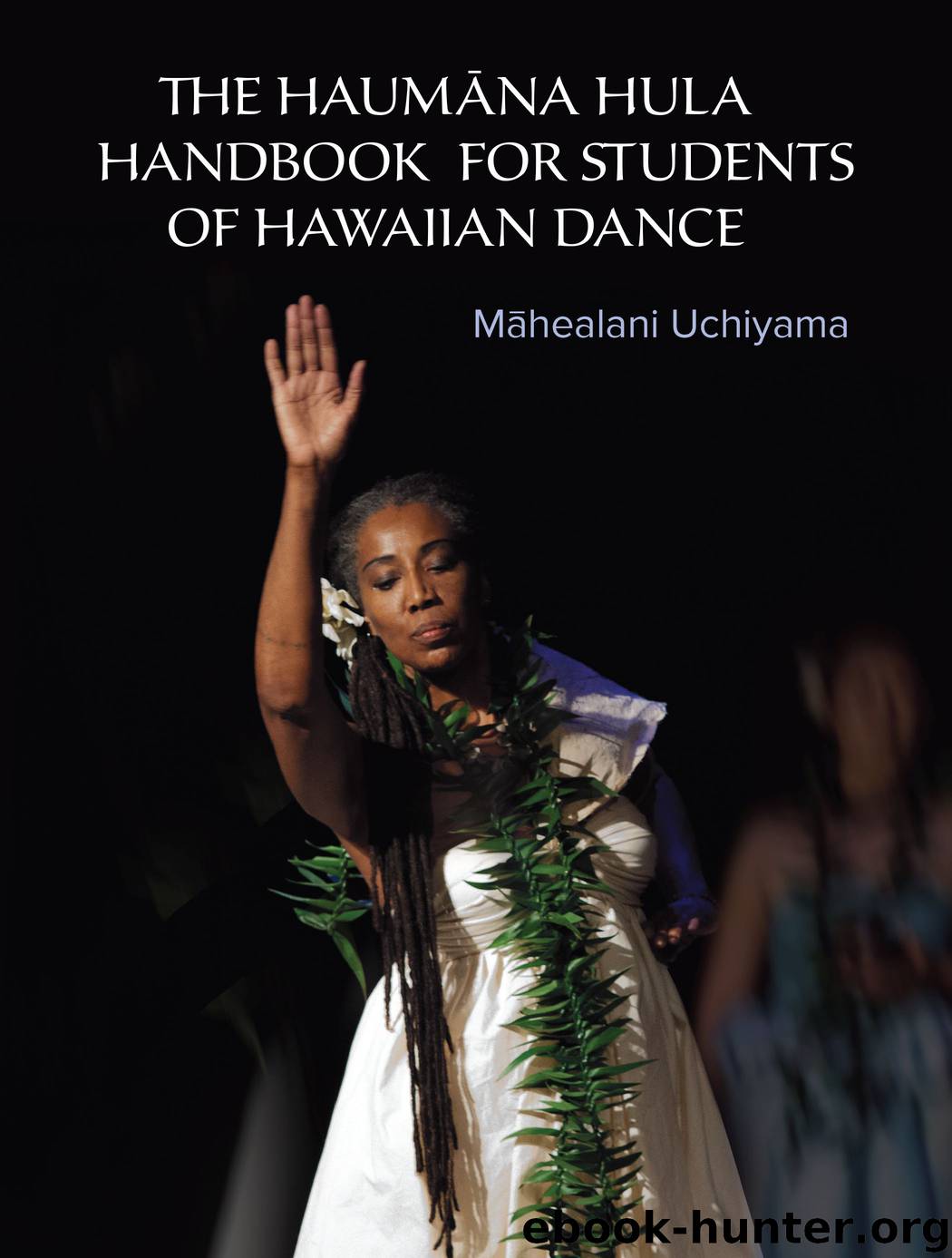The Haumana Hula Handbook for Students of Hawaiian Dance by Mahealani Uchiyama

Author:Mahealani Uchiyama [Uchiyama, Māhealani]
Language: eng
Format: epub
Tags: PER003070 Performing Arts / Dance / Reference
ISBN: 978-1-62317-056-1
Publisher: North Atlantic Books
Published: 2016-05-24T16:00:00+00:00
Māhealani Uchiyama
HULA AS SPIRITUAL PRACTICE
RELIGION CAN BE defined as a set of beliefs and practices, while spirituality has more to do with recognizing the sacred in all things. For example, the Hawaiian word for land, “‘āina,” can be translated as “that which sustains us,” and eating its harvest is considered an act of taking the divine within.
The hula is in its essence a spiritual practice. It evolved out of a reverence for the beauty of the world surrounding the ancient ones. In a very real sense, it cannot exist in the absence of spirit, as it is a vehicle for describing that which touches the heart.
Spirit is as intangible as it is palpable. We know it exists every time we go to the ocean, forest, or mountains and feel the energy of the place. It is this energy that we try to convey in the dance. When properly done, the hula satisfies the soul, even for those who may know little or nothing about what the dance represents. It is important for a hula dancer to remain spiritually connected to the earth, vegetation, water, wind, and sky. Understanding what is there and our relationship to these elements leads to a connection that will inform and empower our dance. When we can see, hear, and feel the world as our ancestors did, manifesting their sentiments in our bodies, we become a part of their world, and they become a part of us.
As hula is a method of danced prayer, ha‘a (literally, to dance close to the earth) is the majesty of nature in movement. The flow of lava, the swell of the waves on the shore, the play of the wind through the trees, all are an elegant dance. When this sacred energy moves through us, it becomes hula.
The hula teaches us religious prayers, name songs in honor of gods and chiefs, and historical epics. Birth, love, and death are all commemorated in sung poetry. Through the hula we learn ceremony and protocol. The tradition also teaches us to respect the environment and to recognize the sacredness of life. In this way, hula serves as a medium between the spiritual and the natural world.
Hula is a way of being: its disciples learn how to live in kinship with nature and our place within it. It teaches us to properly care for the land, sea, and air. If the earth is healthy, so are those who dwell on it. The dancer is an instrument, conveying the beauty of the world.
The energy of the dance is centered at the lower torso, at the area behind the piko (belly button), called the nā‘au. Here all thoughts are felt and all life is connected.
For those who look at dance from a Western point of view, it is sometimes trivialized as something one can “grow out of,” and compartmentalized as just another hobby, easily interchanged with the next fad to come along. However, in the worldview of a hula dancer, the earth, the sky, and everything
Download
This site does not store any files on its server. We only index and link to content provided by other sites. Please contact the content providers to delete copyright contents if any and email us, we'll remove relevant links or contents immediately.
| Ballet | Ballroom |
| Choreography | Classical |
| Folk | Jazz |
| Modern | Notation |
| Popular | Reference |
| Tango | Tap |
Call Me by Your Name by André Aciman(18953)
Ready Player One by Cline Ernest(12828)
How to Be a Bawse: A Guide to Conquering Life by Lilly Singh(6686)
Wiseguy by Nicholas Pileggi(4581)
The Kite Runner by Khaled Hosseini(4416)
On Writing A Memoir of the Craft by Stephen King(4205)
The Crown by Robert Lacey(4099)
Audition by Ryu Murakami(4091)
Call me by your name by Andre Aciman(4065)
Harry Potter and the Cursed Child: The Journey by Harry Potter Theatrical Productions(3953)
Gerald's Game by Stephen King(3913)
The Perils of Being Moderately Famous by Soha Ali Khan(3781)
Dialogue by Robert McKee(3575)
Dynamic Alignment Through Imagery by Eric Franklin(3482)
Apollo 8 by Jeffrey Kluger(3196)
How to be Champion: My Autobiography by Sarah Millican(3180)
Seriously... I'm Kidding by Ellen DeGeneres(3098)
Darker by E L James(3086)
History of Dance, 2E by Gayle Kassing(2997)
